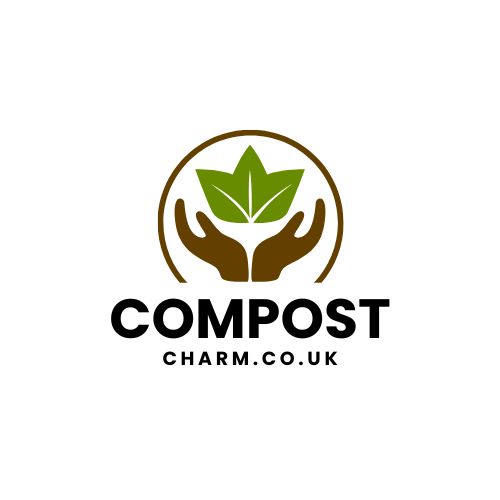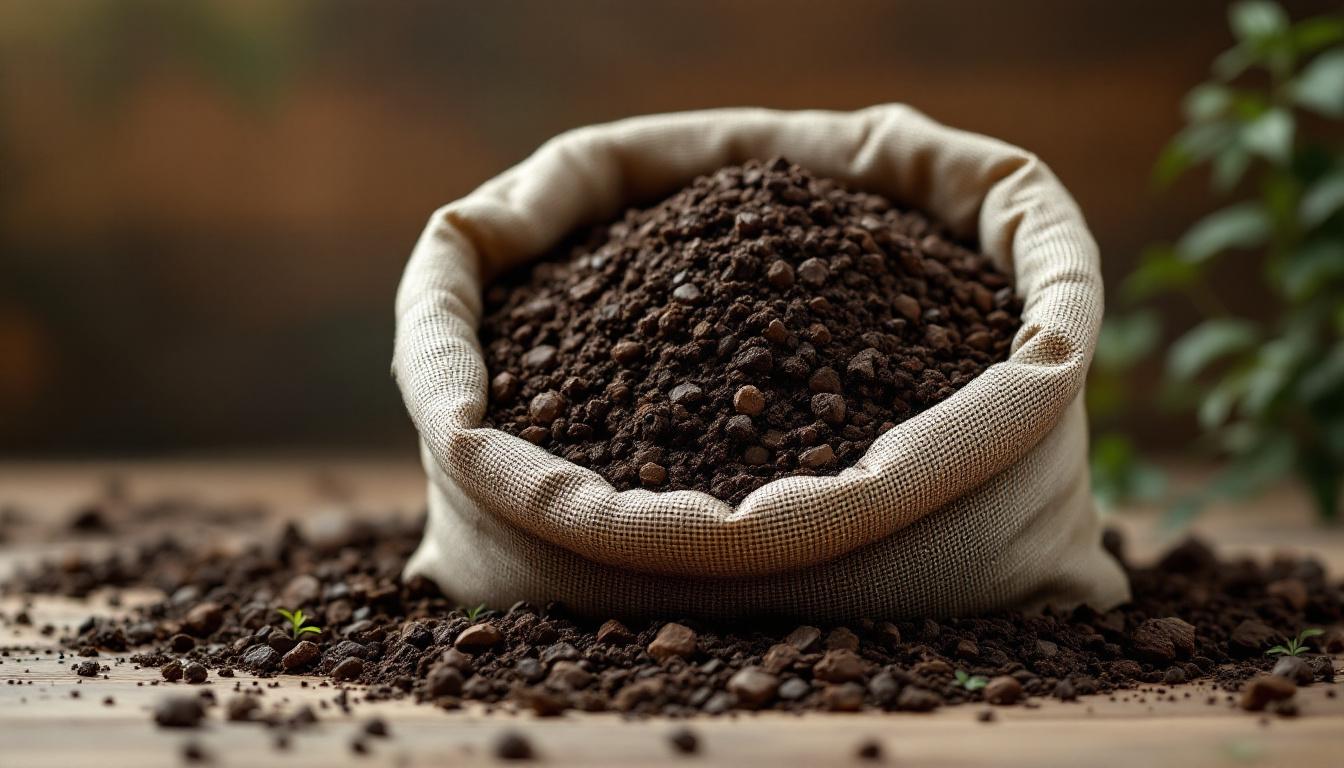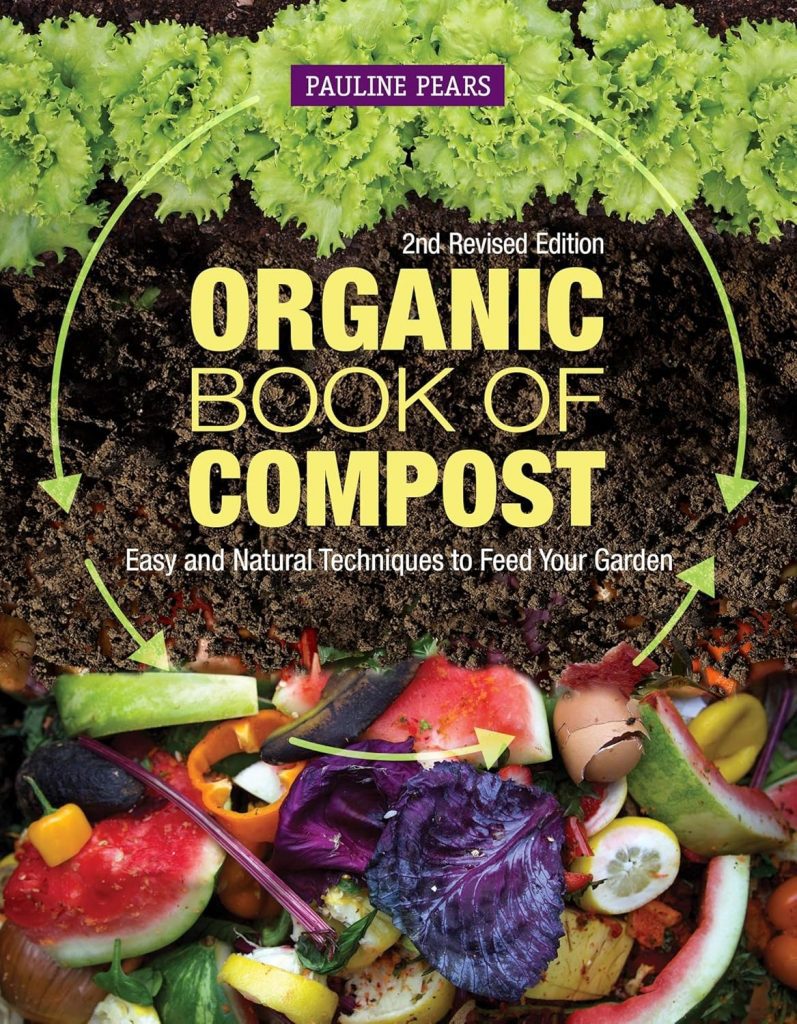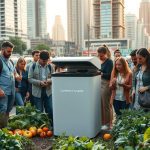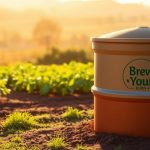Simple Steps for Healthier Gardens
If you’ve ever wondered how composting improves your local soils, the answer is surprisingly simple: it feeds the earth right in your backyard.
Composting breaks down kitchen scraps, garden clippings and even newspaper, turning them into a rich soil boost full of nutrients and tiny living helpers.
Just by recycling your everyday waste through compost piles, vermicomposting bins or a trusty compost tumbler, you give your soil the food it craves for healthier plants and stronger roots.
Getting started with composting is easier than most people think, and it’s one of the most rewarding ways to recycle at home.
Anyone, whether you’ve got a big garden or a few pots near the kitchen window, can enjoy the benefits.
You’ll not only reduce waste but also help your plants thrive—all while having a little fun along the way.
Key Takeaways
- Composting builds healthier local soil by adding nutrients and living microbes.
- Simple home methods, like vermicomposting or using a compost tumbler, suit every space.
- Making and using compost supports stronger, more productive gardens with less chemical input.
- You can enjoy gardening and a greener lifestyle by starting small and learning as you go.
Curious about how compost fits into your plant pots or if it can replace potting soil?
Find more details in this helpful guide on using compost for potting soil.
What is Composting and Why Does it Matter?
Composting is the natural magic that transforms everyday scraps—like vegetable peels and tea bags—into powerful soil food.
If you want to know how composting improves your local soils, the answer is as simple as giving nature a helping hand. Instead of sending waste away, you create something gardeners like to call “black gold”—the dark, crumbly, nutrient-rich matter that restores tired soil and sparks healthy plant growth.
When done at home, composting lightens your trash bin, reduces your carbon footprint, and gives your garden a feast of goodness.
Compost Basics: Nature’s Recycling
 Photo by SHVETS production
Photo by SHVETS production
Think of composting as Mother Nature’s version of a slow cooker. Toss in your food scraps, add some leaves, and let tiny decomposers (like worms, fungi, and bacteria) work their magic.
These invisible kitchen staff break down leftovers into humus—a soft, earthy material loaded with nutrients.
Over time, this process unlocks key plant food and returns it to the earth, where new growth can soak it up.
Decomposition is simply the gradual breakdown of organic material, like apple cores or eggshells. In a compost pile, helpful microbes munch away, heat builds up, and over weeks or months, everything is transformed into crumbly compost.
This nutrient cycle is the reason composting matters: it recycles waste into nourishment, helping local soils hold more water, grow stronger roots, and even store more carbon.
For a friendly introduction, see Composting 101 by NRDC.
Common Composting Methods at Home
There’s no one-size-fits-all way to compost. Some households use a simple heap; others love the science project vibe of vermicomposting with worms, or the tidy turning action of a compost tumbler.
Not sure where to start? Here are the most popular home composting methods:
- Compost Tumbler: A drum you turn by hand—no need for a pitchfork or lots of space. It keeps things tidy and speeds up decomposition.
- Vermicomposting: A worm bin you tuck under the sink or in a shed. Red wigglers love eating food scraps and churn out extra-rich compost.
- Open Pile or Bin: Great if you have a garden corner. Just layer greens and browns, let rain and sun do their thing, and give it an occasional stir.
- Enclosed Bin: Like a mini composter for patios or balconies. Keeps pests out and heat in.
If you want guidance on which method fits your home, check out this full guide to effective composting methods, from classic piles to indoor-friendly solutions.
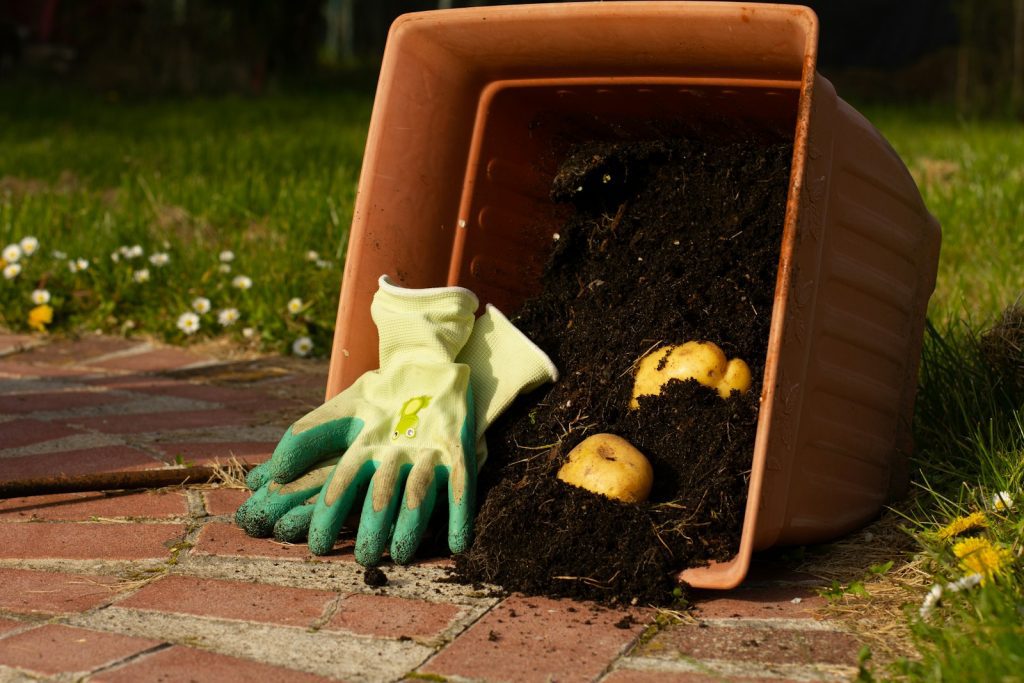
Key Ingredients for Successful Compost
Building your first compost pile is like cooking a nourishing soup—get the right mix for the best results.
Here’s what you need:
1. Greens: These are fresh or moist materials, such as:
- Fruit and vegetable scraps
- Coffee grounds
- Grass clippings
- Used tea leaves
“Greens” supply nitrogen, which helps the microbes multiply and break down waste quickly.
2. Browns: Dry, carbon-rich materials balance the mix. Common examples:
- Shredded newspaper or cardboard
- Dead leaves
- Straw or hay
- Twigs and wood chips
Browns provide energy for the decomposers and keep the compost from getting soggy or smelly.
3. Air: Compost needs to breathe. Turn your pile every week or so, or use a compost tumbler to keep airflow steady. This prevents nasty odors and keeps those helpful microbes happy.
4. Moisture: Think of a wrung-out sponge—damp but not dripping. Too much water can drown the microbes; too little slows them down.
If things get dry, squirt with your watering can.
Starter tips:
- Chop large pieces smaller before you add them.
- Alternate greens and browns in layers.
- Avoid meat, dairy, and oily foods—they attract pests.
- If you’re stumped or want personalized tips, stop by the Ask A Question tool for friendly help.
Getting the balance right means your compost will break down quickly, smell earthy (not icky), and give your local soil everything it needs for strong, thriving plants.
Key Takeaways:
- Composting mimics nature’s way of recycling and feeds tired soils.
- Home methods like vermicomposting and compost tumblers make composting easy for anyone.
- A balanced compost pile needs greens for nitrogen, browns for carbon, plus air and moisture.
- Compost boosts your garden, reduces landfill waste, and cuts your carbon footprint.
Want a hand getting started? For step-by-step guidance, visit Starting Composting at Home.
FAQ
What can I put in my compost bin?
Stick to fruit and veggie scraps, coffee grounds, eggshells, leaves, and shredded paper. Skip meat, dairy, and anything oily.
How do I know if my compost is “done”?
It should look dark, crumbly, and smell earthy. No obvious scraps left.
Will composting work in a small space or flat?
Absolutely! Vermicomposting bins and compact tumblers are perfect for flats and tiny patios.
Does composting attract pests?
Not if you avoid meat and dairy, keep your pile covered, and turn it now and then.
Why does composting help local soils?
Compost acts as a slow-release fertilizer, adding nutrients and improving soil health for years. For more benefits, visit this helpful guide from the US EPA.
How Composting Makes Your Local Soil Better
Composting gives your local soil a much-needed lift, whether you’re tending a flower bed or growing your own veggies.
By adding homemade compost—whether from a backyard pile, a compost tumbler, or a worm-filled bin—you restore and feed your garden from the ground up.
Here’s how composting improves your local soils in real, practical ways.
More Nutrients for Healthier Plants
Imagine planting in two garden beds side by side. In one, the soil is tired, pale, and clumpy, offering little food for your plants.
In the other, you’ve blended in plenty of dark, crumbly compost.
Seeds in the poor soil might sprout, but they usually end up weak, with yellowish leaves and stunted growth.
Now look at the compost-rich bed. Compost is packed with nutrients like nitrogen, phosphorus, and potassium, plus dozens of tiny trace minerals.
These elements are what plants need most to grow tall, strong, and leafy.
Compost works as a slow-release fertilizer, so nutrients keep feeding your garden for months.
- Quick visual: Tomatoes in compost-rich soil grow big, set more fruit, and resist disease better than those in plain dirt.
- Simple science: Nutrients in compost become available to roots gradually, unlike chemical fertilizers which can wash away.
Adding compost not only gives your plants extra food, it helps balance the nutrients so nothing is over- or under-supplied.
This supports steady growth, brighter flowers, and tastier veggies.
Want to know more about tailoring your compost for the best plant health? Explore Benefits of Compost for a deeper look.
Soil Structure, Drainage, and Water Holding
 Photo by Anna Tarazevich
Photo by Anna Tarazevich
Composting doesn’t just feed plants—it transforms how soil feels and works. Think of compost as a natural sponge.
When you mix compost into garden beds, the soil becomes fluffier and less packed down. Water can soak in more easily, and roots have space to breathe.
Here’s what happens when you add compost:
- Heavy, clay soil loosens up and becomes easier to dig.
- Sandy soil holds more water so you don’t have to water as often.
- Puddles and runoff become less common, and delicate seedlings are less likely to drown.
By breaking up clumps and attracting earthworms, compost helps water drain when there’s too much rain but also holds onto moisture for dry spells.
This even soil texture keeps your beds from baking hard or turning to mud.
For more on how compost helps water management, read about how compost increases water holding capacity in droughty soils.
If you’re starting composting at home for the first time, visit this composting at home guide for practical steps.
Richer Soil Life: Microbes, Worms, and Beyond
Soil is alive, even if we don’t see most of its residents. Adding compost is like rolling out a red carpet for helpful critters.
Just one handful of finished compost might contain more microbes than there are people on Earth!
These tiny creatures (think bacteria and fungi) work as nature’s clean-up crew, turning dead plants into food for new growth.
But it’s not just the microscopic team. When you practice composting or vermicomposting, you’ll see more earthworms, beetles, and other small helpers.
Earthworms tunnel through the soil, making channels for air and water.
They also leave behind castings—tiny nuggets of natural fertilizer.
Why does this matter? Healthy soil life improves plant health in big ways:
- Soil microbes protect roots from harmful pests and disease.
- Worms and bugs break down organic matter faster, making nutrients available sooner.
- Mycorrhizal fungi form networks that help roots absorb even more nutrients and water.
If you’ve added compost from a compost tumbler or a worm bin, you might notice the soil is not just richer, but also teeming with visible and hidden life.
This living network means your garden is full of helpers and natural protection.
Curious about how to attract more soil life or want tips for all seasons? Try these seasonal composting calendar tricks.
Key Takeaways
- Composting adds essential nutrients, feeds plants, and improves growth.
- Blending compost into soil boosts water holding and keeps beds fluffy, preventing sogginess or dryness.
- Healthy compost is bustling with microbes and earthworms that keep your garden thriving and resilient.
- Composting, from simple piles to vermicomposting or using a compost tumbler, brings every type of soil to life, supporting a healthier and more productive garden.
Practical Composting at Home:
Tools and Tips for Beginners
Getting started with composting can feel like a mix of hope and mild confusion. Maybe your kitchen scraps pile up fast and you want healthier plants, but you worry composting is too hard or messy.
Good news: You don’t need a sprawling garden or fancy gadgets. You just need a method that fits your style and a few well-chosen tips.
Here’s how to jump in and build better soil, one banana peel at a time.
Choosing Your Composting Method and Tools: Compare the Ease and Benefits

Photo by Greta Hoffman
Picking the right composting style is a bit like choosing a pet.
Some options are low-maintenance and fit a busy schedule, while others need more hands-on care but reward you with fantastic results.
Here’s what to expect from the three most popular types:
- Open Pile or Bin:
- Great if you have a backyard.
- Needs space and time for mixing.
- Cheapest option, just stack layers and turn now and then.
- Attracts lots of helpful organisms that boost soil health.
- Compost Tumbler:
- Perfect for patios or small areas.
- Fast and tidy—just spin the barrel to mix.
- Keeps pests away, speeds up composting, and fits urban living.
- Curious about compact options? Explore the best compost tumbler for balconies to see which models fit tight spaces.
- Worm Bin (Vermicomposting):
- Great for flats, kitchens, or garages.
- Red wiggler worms turn scraps into super-rich compost.
- No smell if managed right, fun for kids and science fans.
- Needs mild temps and a little TLC, but gets high marks for making quick compost.
Match your composting method to your lifestyle and space. If you like quick, tidy results, a compost tumbler may suit you best.
Love nature’s science up close? Give vermicomposting a try. Have a garden and don’t mind a little work? Go with an open pile.
Composting Do’s and Don’ts: Friendly Reminders for Success
The “dos” of composting are mostly common sense, but a few don’ts can save lots of headaches.
Here’s a handy cheat sheet to keep your compost bin thriving (and your nose happy):
Do:
- Add both “greens” (veggie scraps, coffee grounds) and “browns” (leaves, cardboard).
- Keep the pile as damp as a wrung-out sponge.
- Turn your compost every couple of weeks, or use a tumbler for easy mixing.
- Chop large scraps so they break down faster.
- Cover food scraps with dry material to prevent odors and pests.
Don’t:
- Avoid adding meat, dairy, oily foods, or pet waste (trust us, you’ll regret it).
- Don’t drown your compost—too much water creates smelly sludge.
- Skip glossy paper or plastics.
- Don’t ignore the bin—give it a stir now and then for best results.
If you’re wondering about trickier items like paper or cardboard, see the how to compost cardboard and paper guide for pro tips, checklists, and things to avoid.
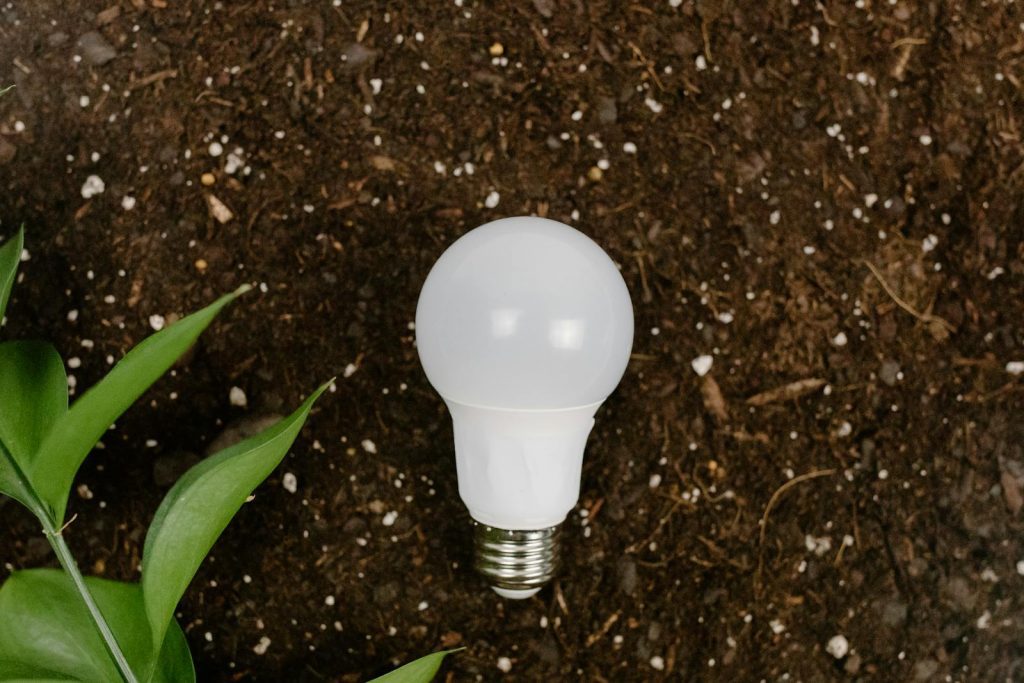
A Year of Compost: Simple Seasonal Tips
Composting is a bit like keeping a pet goldfish—feed it regularly, check on it now and then, and it’ll reward you year-round.
Here’s what to watch for as the seasons change:
- Spring:
Give your pile a good mix, add lawn clippings, and let spring rain keep things moist. Like a garden waking up, the compost bin gets busy as it warms. - Summer:
Things speed up as the temperature rises. Turn your compost often and keep it damp. If you’re away, think of your bin as a cactus: water now and then, but don’t drown it. - Autumn:
Leaves everywhere? Perfect! Pile on those browns. They keep compost balanced, like breadcrumbs in meatballs. - Winter:
The compost may nap, breaking down slowly, but that’s OK. Cover with straw or cardboard for warmth. If you’re using worms, peek in to check they’re cozy—see Winter Composting Challenges with Worms for helpful cold-weather ideas.
No matter the month, a well-cared-for compost bin keeps working for your soil. Even small efforts help local soils by providing nutrients every season of the year.
For more all-year tricks, try the Composting Guide: Don’t Toss It Away for odd bits you can (and can’t) compost.
Key Takeaways:
- Match composting tools to your space and lifestyle—open bins, compost tumblers, or worm bins each have unique perks.
- Balance “greens” and “browns,” keep things moist but not wet, and avoid composting meat or dairy for easy success.
- Adapt your routine as seasons change to keep your compost active and your local soils fed all year.
Try, tweak, and enjoy the process. Composting doesn’t have to be perfect to make a big difference in your garden and for the planet.
Summary and Key Takeaways
Composting is like hitting the reset button for your soil. With each banana peel, grass clipping, or handful of leaves you compost, you help your soil get stronger and your plants grow healthier.
Learning how composting improves your local soils means understanding a few simple steps can transform tired dirt into a living powerhouse.
Here’s a quick guide to help you keep the benefits top of mind.
The Power of Composting for Local Soils
- Compost feeds your soil exactly what it needs—nutrients, helpful microbes, and structure. The result is stronger roots, happier plants, and fewer problems with pests and diseases.
- Using compost, vermicomposting, or a compost tumbler boosts soil life. Healthy soils are full of tiny helpers like earthworms and fungi that create a comfy home for roots and give plants a strong start.
- Composting helps your garden hold water when it’s dry and lets extra water drain away when it’s wet. That means less watering, healthier flowers and veggies, and less worry about soggy roots.
If you’re wondering about special types of compost, like peat-free blends, check out the added perks over at the advantages of peat-free compost.
Main Ways Composting Benefits Your Garden
To make it easier, here’s a quick list of what happens when you use compost and composting methods in your garden:
- Adds slow-release nutrients. Compost keeps plants fed over time, unlike many store-bought fertilizers that wash away.
- Improves soil texture. You’ll find digging is easier, and plants can take root without struggling.
- Boosts water management. Compost acts like a sponge, holding moisture for dry days and draining away puddles in rainy weather.
- Increases soil life. Earthworms and good microbes thrive, turning your soil into a bustling, self-sustaining mini-ecosystem.
- Reduces the need for chemicals. Healthier soil means you can skip harsh fertilizers and grow food you feel good about.
Curious about getting started with compost in a small area? Read about composting in small backyards for easy, space-saving tips.
Key Takeaways for the Home Composter
Let’s wrap up this section with a few final thoughts you can carry into the garden:
- Composting transforms food and yard waste into a resource that improves every patch of soil, no matter the size.
- Healthy compost feeds your soil, supports beneficial bugs and microbes, and helps every plant thrive.
- Try composting methods that suit your space, like vermicomposting or using a compost tumbler, to enjoy the full benefits with less hassle.
For a deeper dive into what goes into high-quality compost, explore the basics in this guide on compost manure explained.
Fast FAQ
- Does composting really make a difference for my garden’s soil?
Absolutely. Even a small amount of homemade compost brings long-lasting benefits. - What if I have limited space?
Both vermicomposting and compact compost tumblers fit easily in small areas and still do a great job. - How fast will I see results?
Plants often perk up within a season or two. With continued composting, soil keeps improving year after year.
For specific questions—or if you hit a composting snag—feel free to use the Ask A Question tool for instant help.
With a cheerful spirit and a pinch of patience, you’ll see how composting improves your local soils and grow a garden that gives back again and again!
Conclusion
Composting transforms your local soils, making gardening easier, more rewarding, and better for the planet.
A simple compost pile or even a compact compost tumbler takes kitchen scraps and turns them into an all-purpose soil booster.
Whether through traditional composting or fun methods like vermicomposting, every bit you add helps your garden thrive.
If you’re just starting or still have questions, you’re not alone. Here are answers to a few common new-composter concerns:
- How long does compost take to be ready?
- Most compost is usable within a few months, especially if you turn it or use a tumbler for faster results.
- Does compost smell bad?
- A healthy compost pile smells earthy. If it stinks, add more dry browns or give it a turn.
- Can I compost cooked food?
- Stick to raw fruit, veg, and coffee grounds at first to avoid pests. Once you gain confidence, some cooked foods can be safely composted with care.
- What’s special about a compost tumbler?
- Tumblers make mixing easy and speed up the breakdown, perfect if you want tidy, quick results. Explore different compost tumbler options to suit your space and routine.
- Will worms take over my garden?
- Don’t worry, vermicomposting worms stay in their bin unless you spread finished compost, and that only helps your soil.
For even more tips to avoid waste, check out these practical Don’t Toss It Composting Tips.
Key takeaways:
- Composting gives local soils more nutrients and life, helping every garden work better.
- Compost, vermicomposting, and compost tumblers all make composting possible at home.
- Small changes, like adding coffee grounds or shredded leaves, add up to big improvements in soil health.
- A few simple habits keep composting easy, effective, and rewarding for beginners and green thumbs alike.
Thank you for reading and caring about your local soils. What’s your biggest composting question, or tip you want to share?
Let’s keep growing together—your next pile of kitchen scraps could be the start of your best garden yet.
